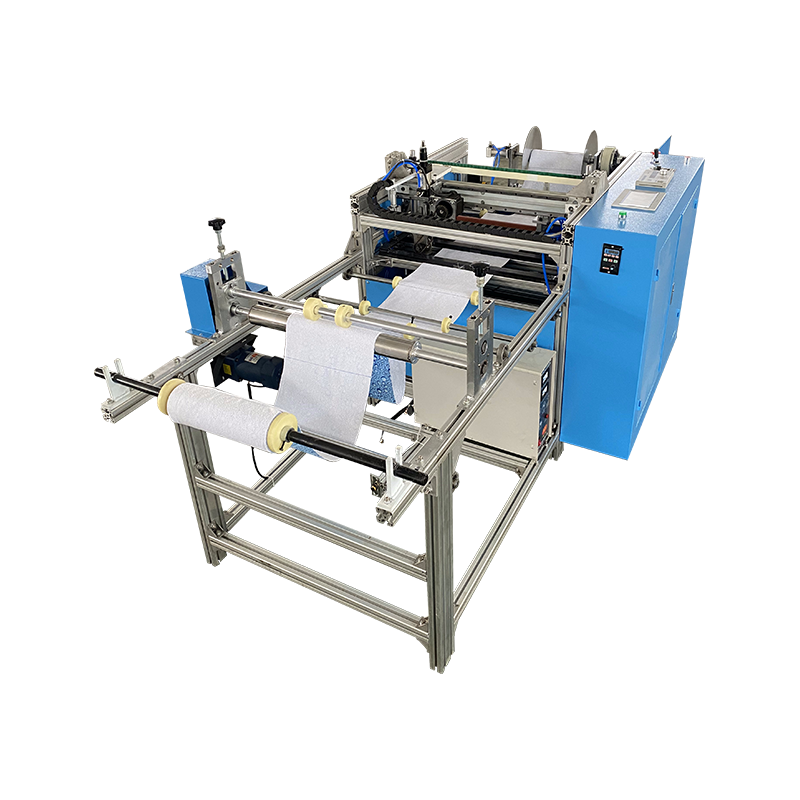Request A Quote

Automated towel cutting machines are designed to efficiently handle variations in towel sizes and thicknesses, ensuring consistent and precise cuts even as the material fluctuates. Here’s how they manage these variations:
1. Tension Control Systems:
Automatic Tension Adjustment: Many modern towel cutting machines are equipped with tension control systems that automatically adjust to the changes in the fabric’s thickness and density. This ensures that the fabric is fed consistently and evenly through the cutting mechanism, preventing slack or stretching that could affect the cut quality. For thicker towels, the system may apply more tension to maintain uniform fabric movement.
Feedback Sensors: Some systems use feedback sensors to monitor the fabric tension in real-time. If a variation in thickness is detected, the system adjusts the tension accordingly, ensuring the fabric stays taut and moves smoothly through the machine.
2. Servo Motors and Variable Speed Control:
Servo Motor Technology: Servo motors can adjust the speed and force applied during the cutting process, which is particularly useful when handling towels of different thicknesses. By controlling the motor speed precisely, these machines can maintain cutting accuracy and prevent issues such as skipping or uneven cuts, even when the towel’s thickness varies.
Variable Speed Feeders: Automated towel cutting machines often feature variable speed feeders that adjust the feed rate of the fabric based on its thickness. For example, thicker towels may require a slower feed rate to ensure the material moves at the correct speed, allowing for cleaner cuts.
3. Cutting Mechanism Adjustments:
Blade Pressure Adjustment: Some machines have adjustable cutting blades that can change the cutting pressure to accommodate variations in towel thickness. This ensures a clean, straight cut without damaging the fabric. Thicker towels may require more cutting pressure, while thinner towels can be cut with less force.
Rotary Blades or Guillotines: Rotary blades and guillotine-style cutters are common in automated systems. These blades can be adjusted to maintain precision across varying towel thicknesses. With rotary blades, the cutting depth can be modified to match the material thickness, ensuring clean and accurate cuts.
4. Sensor and Detection Systems:
Thickness Detection Sensors: Some automated towel cutting machines are equipped with advanced sensors that measure the thickness of the towel fabric as it passes through the machine. Based on real-time measurements, the machine can adjust the cutting settings, such as blade speed or tension, to handle different towel thicknesses automatically.
Edge Detection and Alignment: To further improve consistency, machines may include edge detection systems to ensure that the fabric is aligned correctly during the cutting process. This is particularly important when dealing with towels of varying sizes, as misalignment could lead to inaccurate or off-center cuts.
5. Programmable Settings:
Customizable Parameters: Many automated towel cutting machines allow operators to input parameters specific to the production run, such as towel size and thickness. These settings adjust the machine’s operation to suit the material being processed. By storing presets for different towel types, the machine can quickly switch between fabric variations without manual recalibration.

6. Automatic Length and Size Adjustment:
Automatic Measurement Systems: Some machines come with built-in length measurement systems that ensure each towel is cut to the exact desired size, even if there are slight variations in fabric thickness. These systems detect when the towel is approaching the cutting area and adjust the cutting position accordingly, ensuring that each towel is cut to the correct dimensions despite material inconsistencies.
Length Control: For towels of varying thickness, some machines use automatic length control systems to compensate for slight stretching or shrinking of the fabric. This ensures that the cut length remains consistent regardless of the material’s thickness.
7. Edge Finishing:
Fray Prevention: Automated towel cutting machines can also incorporate edge-finishing mechanisms that prevent the towel from fraying after it is cut, regardless of the towel’s thickness. This can include ultrasonic cutting or heat sealing technologies that seal the edges of the fabric, which is particularly useful for towels with variable thickness.
Copyright © ChangZhou AoHeng Machinery Co., Ltd. All Rights Reserved

 English
English 中文简体
中文简体 русский
русский Español
Español